Lina Noueiri is a British-Lebanese Architecture student who's interests focus on socio-environmental justice and sensorial materiality within the spatial environment. Before attending the MA(Arch) Course at the RCA she undertook an Art & Design Foundation Course at Oxford Brookes and a BA(Hons) Architecture course at the University of Westminster. During the BA(Hons) Lina won the CLAWSA Award of Best Portfolio of her year. Between higher education, Lina has gained experience from multiple firms such as HK Architects and Darling Associates.
Lina Noueiri

Degree Details
School of ArchitectureArchitecture (MA)ADS3: Refuse Trespassing Our Bodies — Fertility, Exhaustion and All that Matter/sShow Location: Kensington campus: Darwin Building, Upper ground floor

PORO(US) is a project focusing on the substance of limestone and its over-extraction in the country of Lebanon. Its porosity allows it to create fertile environments with the right conditions. However, the exploitation of the substance for the purposes of cement production pollutes the air with particulate matter and enters the bodies of residents in the country, relating to the post-colonial, post-industrial, capitalist climate of Lebanon.
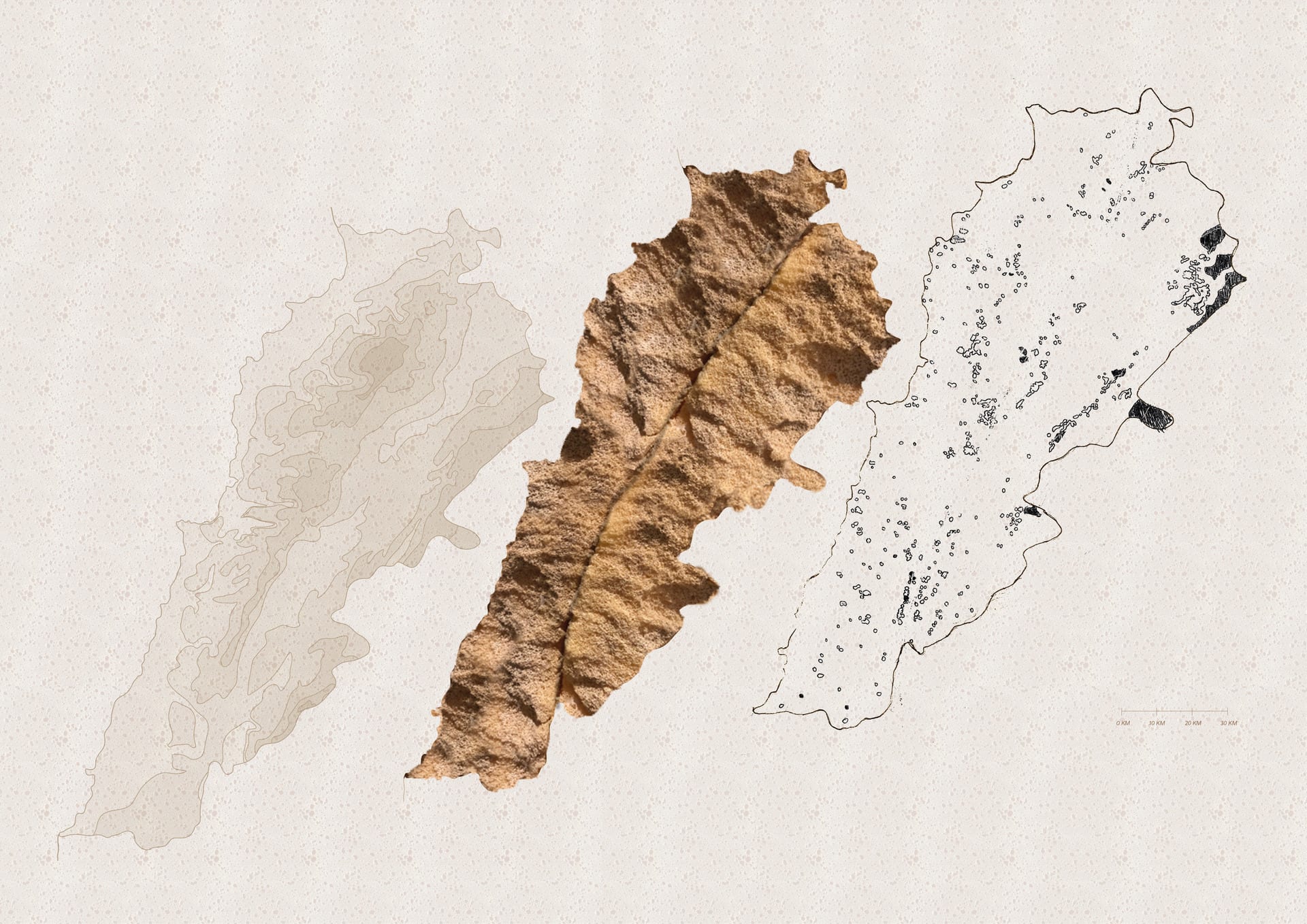



The formation of limestone into a mountain in Lebanon has enhanced the relationship between the sedimentary rock and water from rain or snowfall. As rain filters over and through the rock, it is absorbed like a sponge and held underground in caverns. As water filters through the rock, calcium carbonate dissolves, releasing soil from witihin as insoluble particles such as clay are left on the surface. Therefore, limestone's porous characteristics is what yields fertile surfaces for nonhuman growth to occur.
Medium:
Mixed

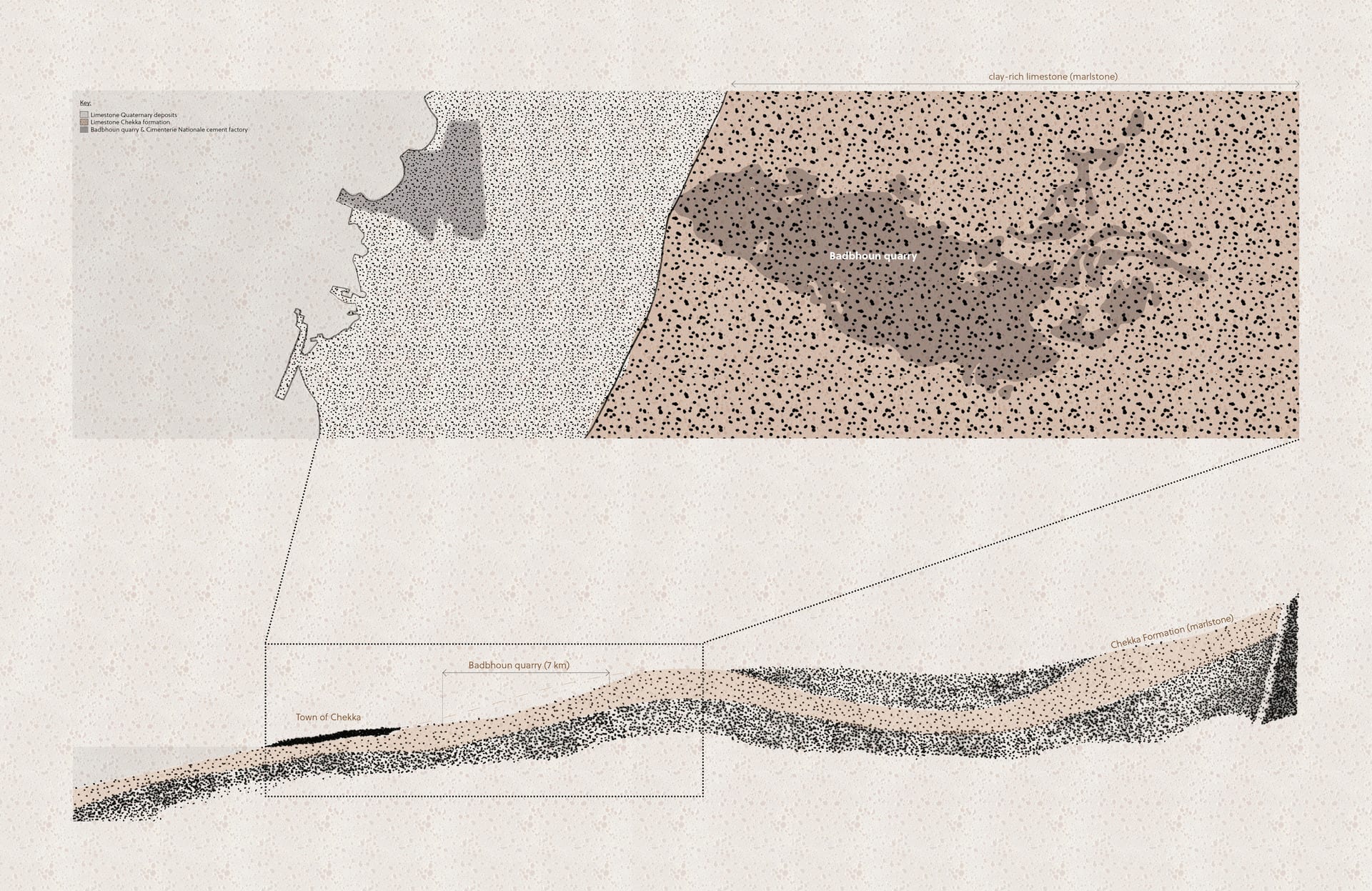




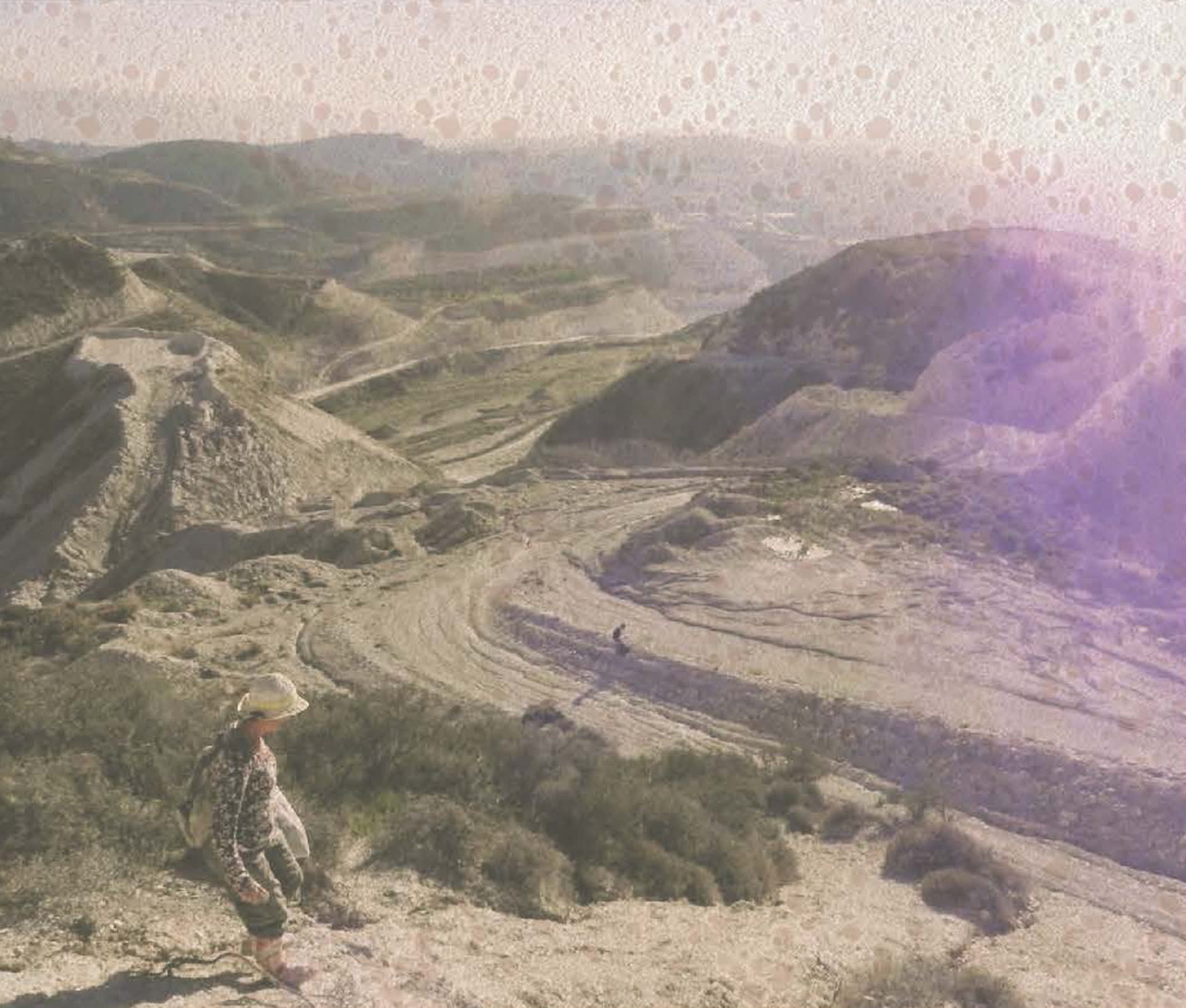
Chekka is a town in Lebanon named after the arabic word for rubble or rock, the very resource exploited for industrial processing. Badbhoun Quarry, owned by Cimenterie Nationale within Chekka, is a quarry that has expanded 7 km to the east over the course of 70 years and is the site of focus for this project. Its expansion occurred through the buying up and stripping of farmland topsoil, in order to be located illegally close to cement factories for cheaper transport costs in the heart of the industrial town.
Medium:
Mixed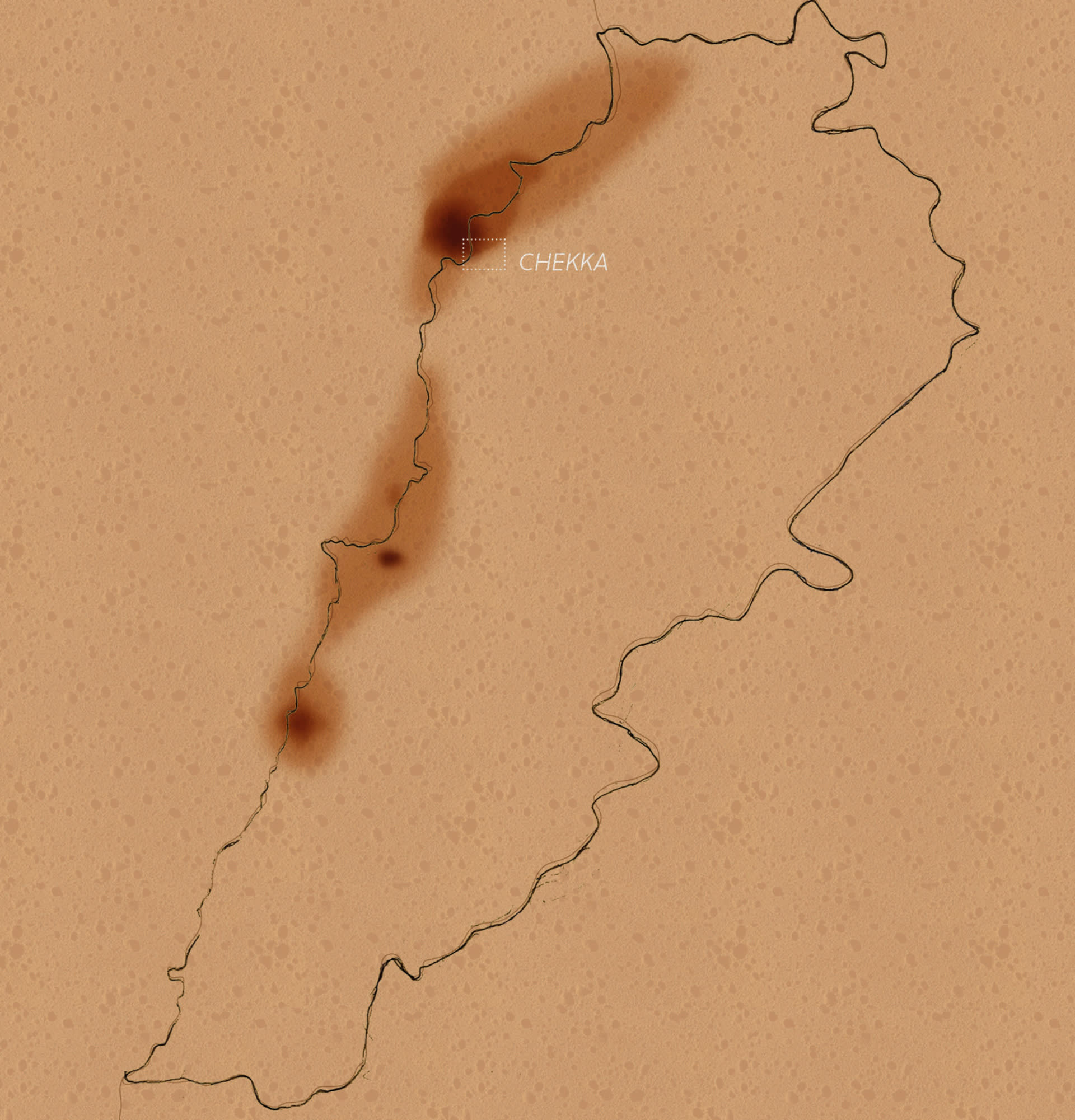

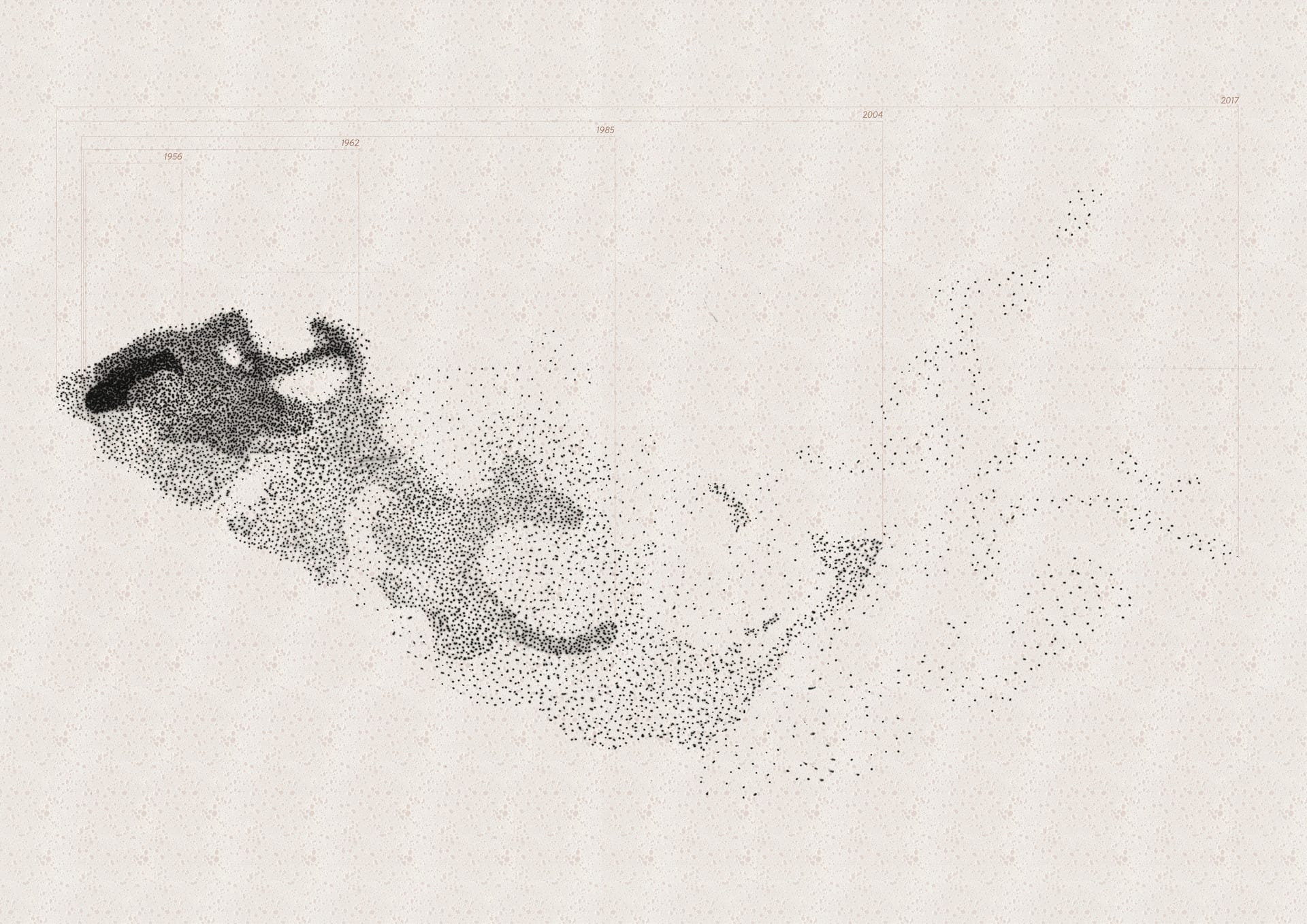
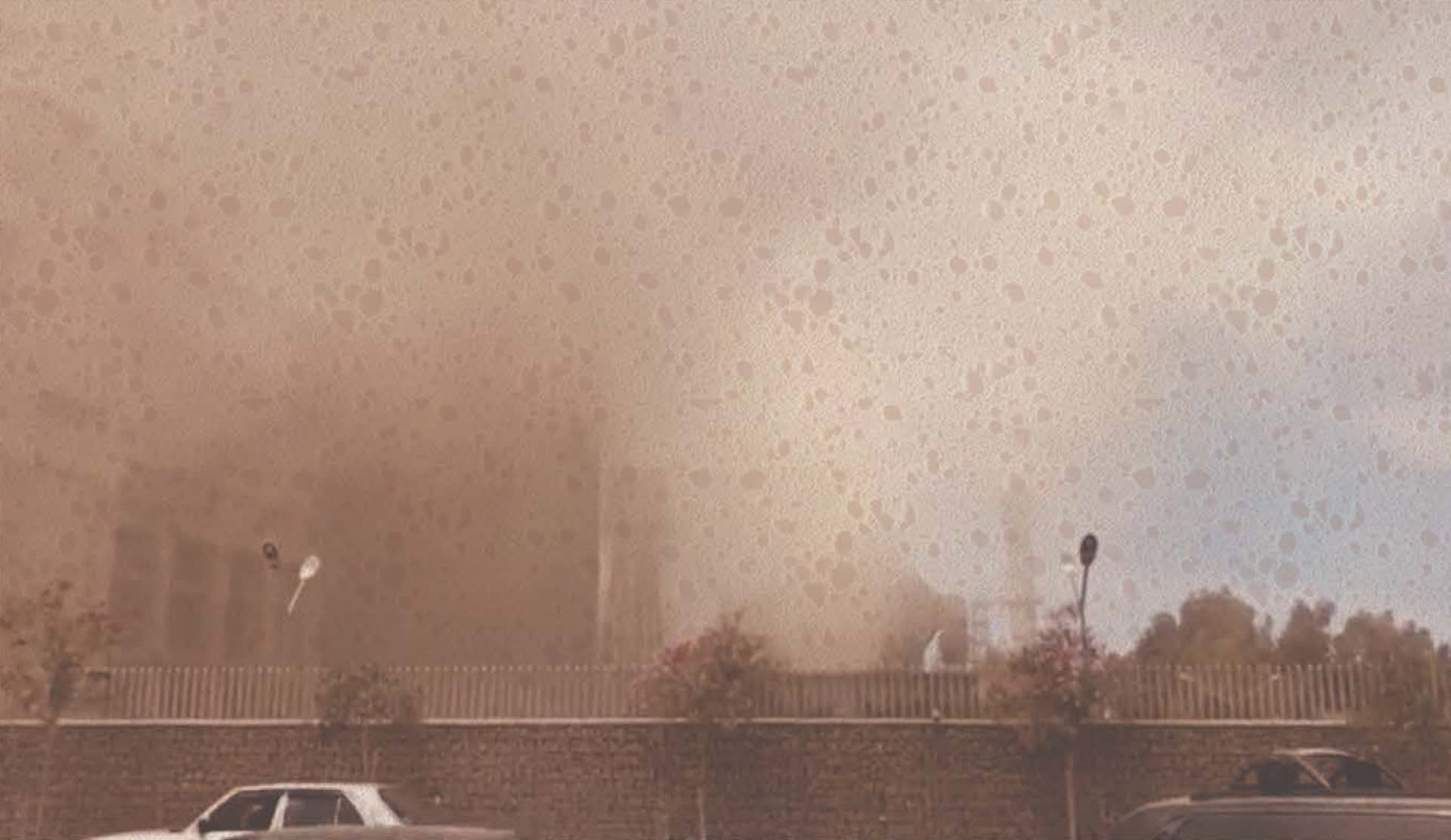





Pollution from cement quarrying explodes the rock, exuding the limestone as harmful particulate matter to be absorbed by humans and nonhumans alike, causing greater rates of disease in Chekka, Lebanon. On the other hand, pre-industrial methods of extracting and working with the rock did not yield such harmful environements with so many victims. In understanding post and pre-industrial methods of extracting the rock we can see how the speed and method of extraction is the violent element, and that a positive relationship between human and limestone can be fostered once again based on understanding with the use of traditional methods of working with limestone.
Medium:
Mixed





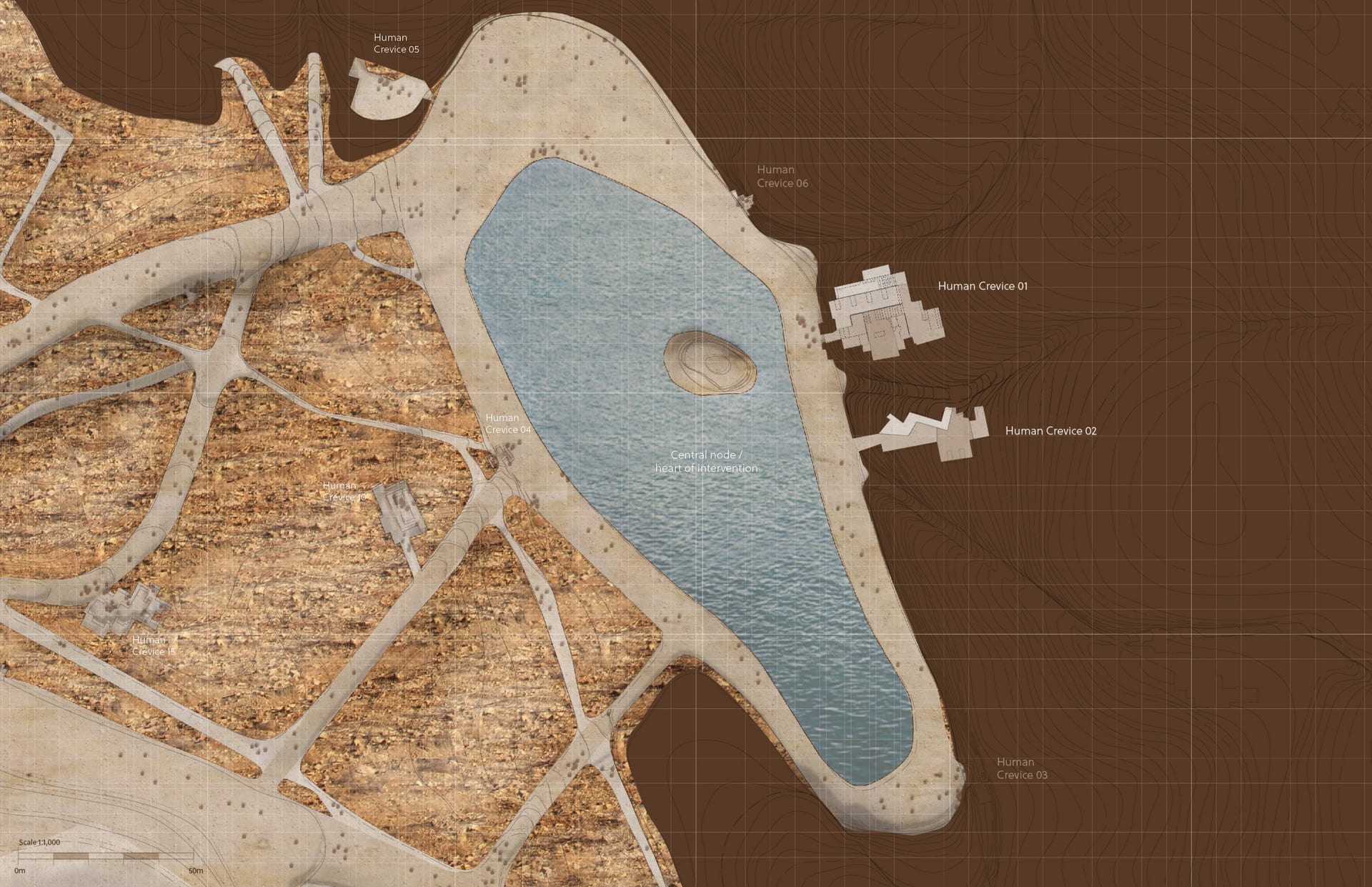
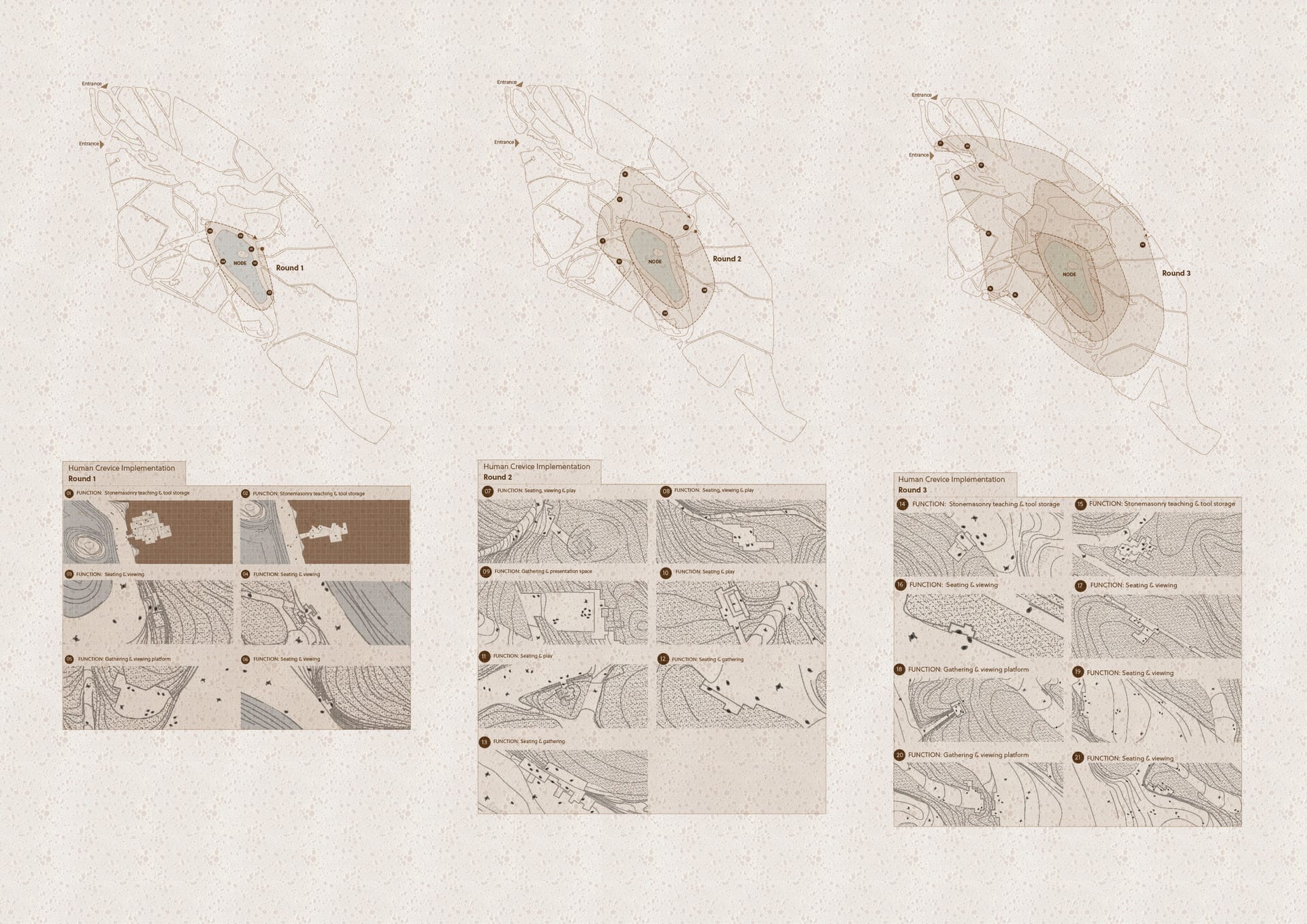
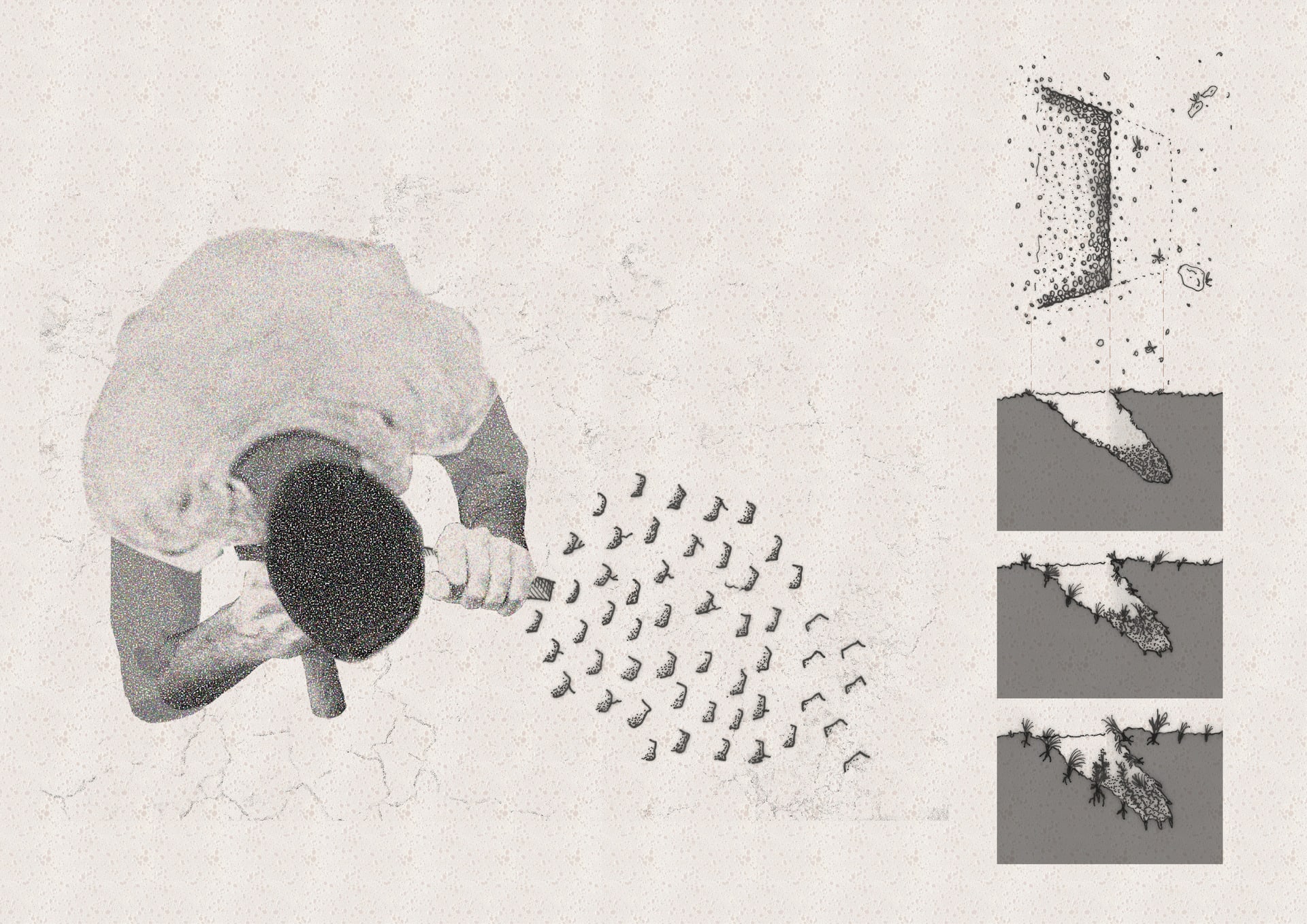



The proposed intervention aims to unlock the potential fertile grounds within the limestone of the quarry surface by re-porosifying the rock. The site also has the potential to be a key site of a cultural shift away from exploitative post-industrial cement processing, and towards a greater use of traditional, slow, small-scale, and tactile stonemasonry techniques. By turning the rock into a sponge once more, using traditional stonemasonry techniques that combat the monopolising and corrupt cement industry, a public space of learning and regeneration can form.
Medium:
Mixed

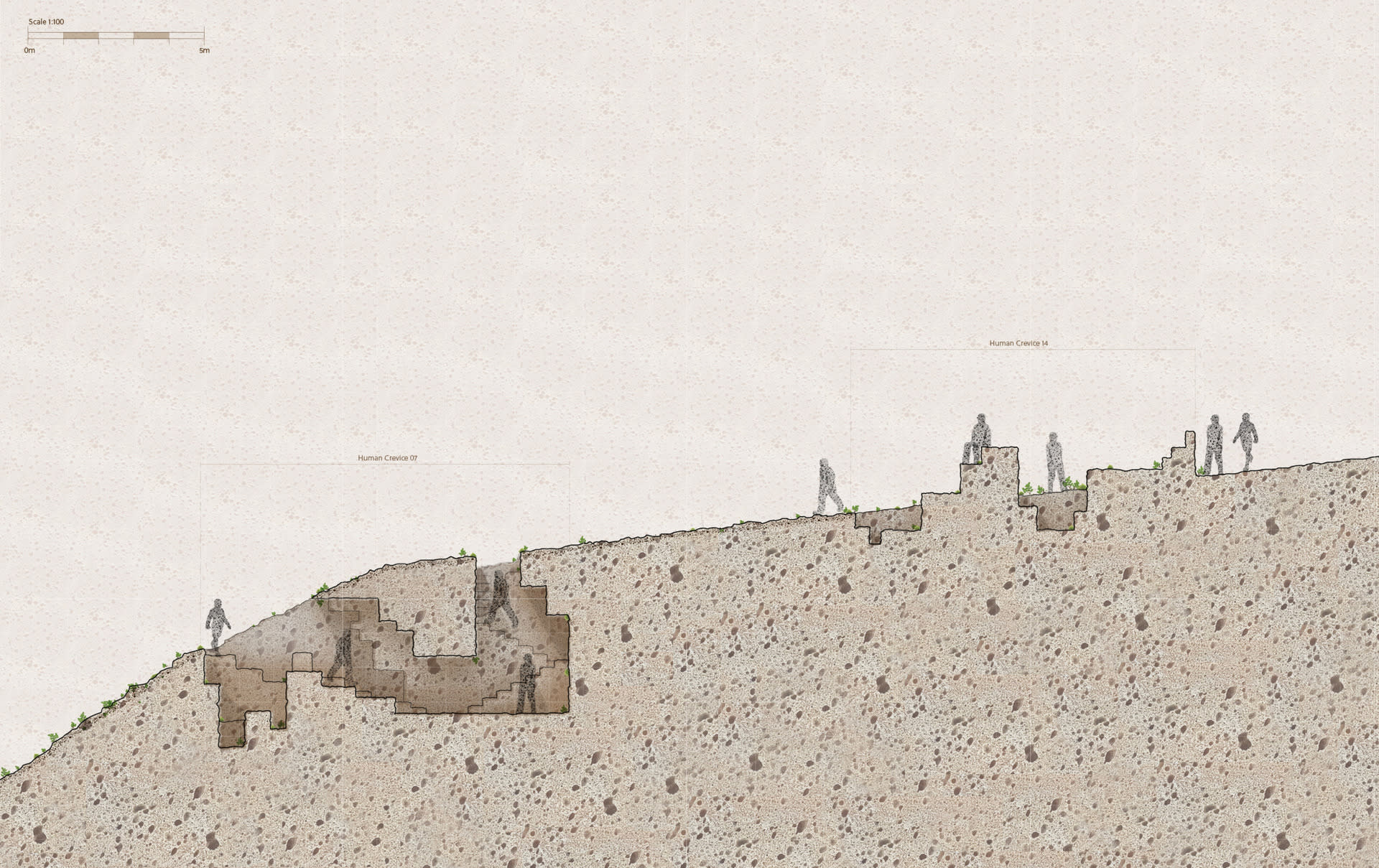

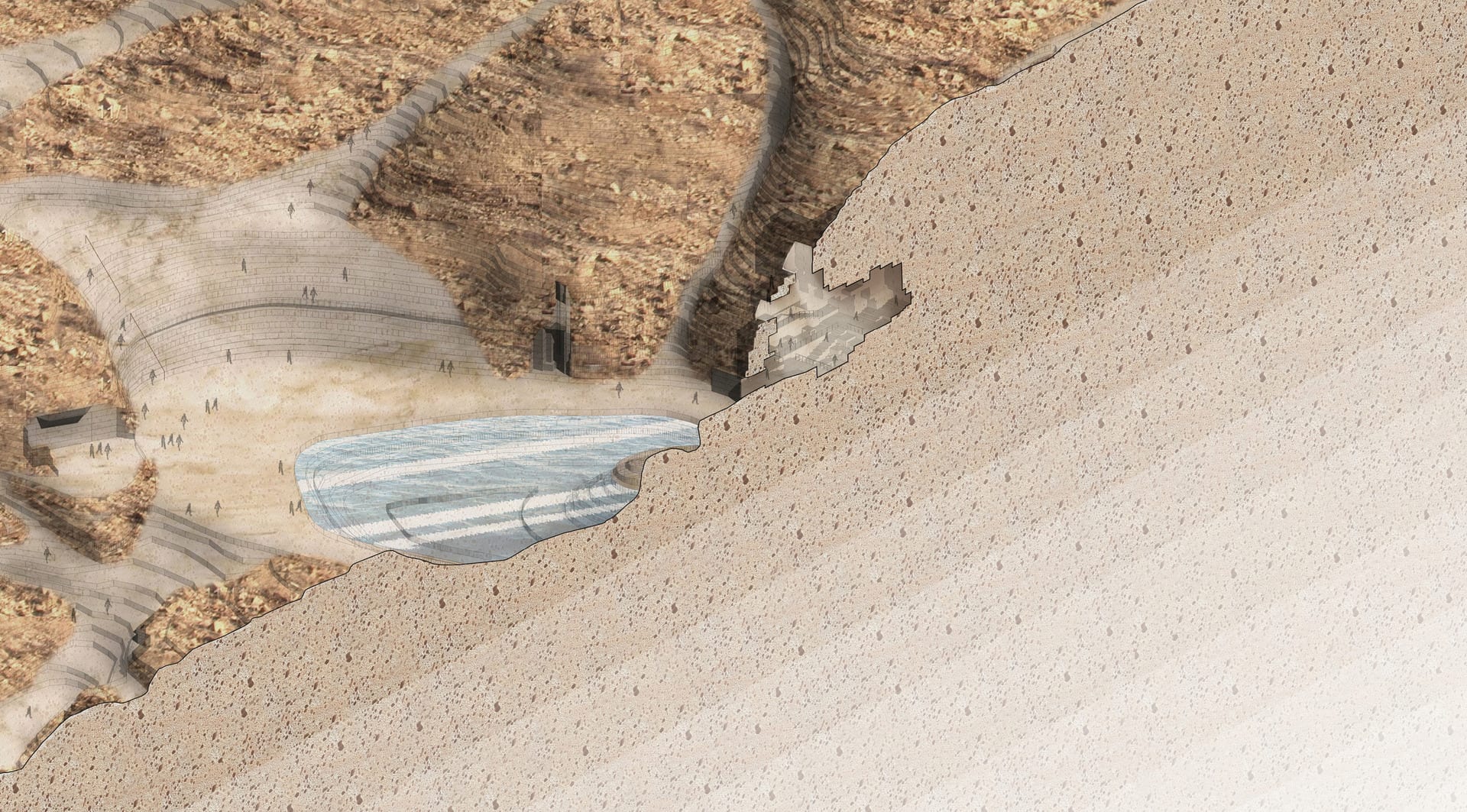
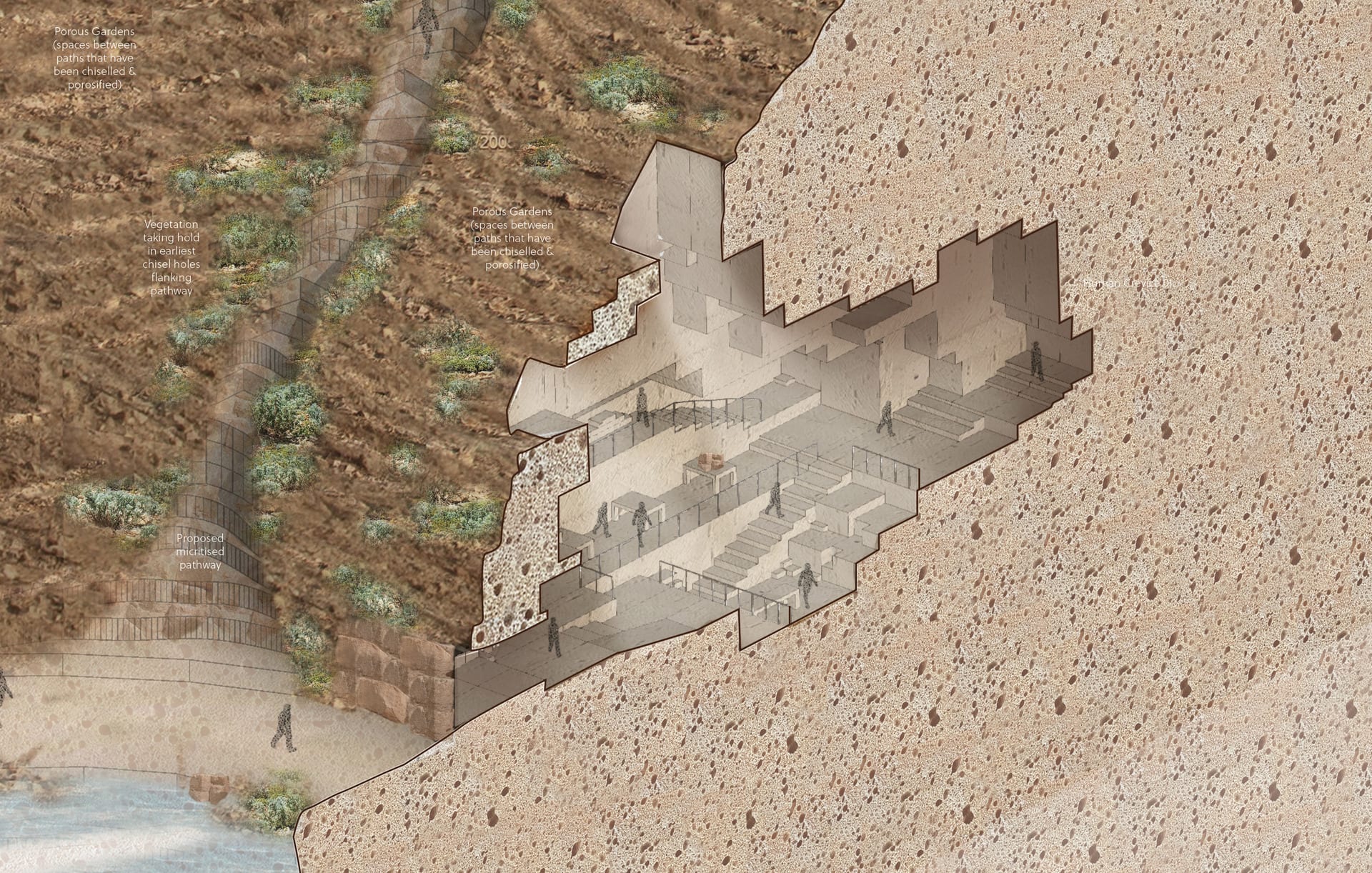

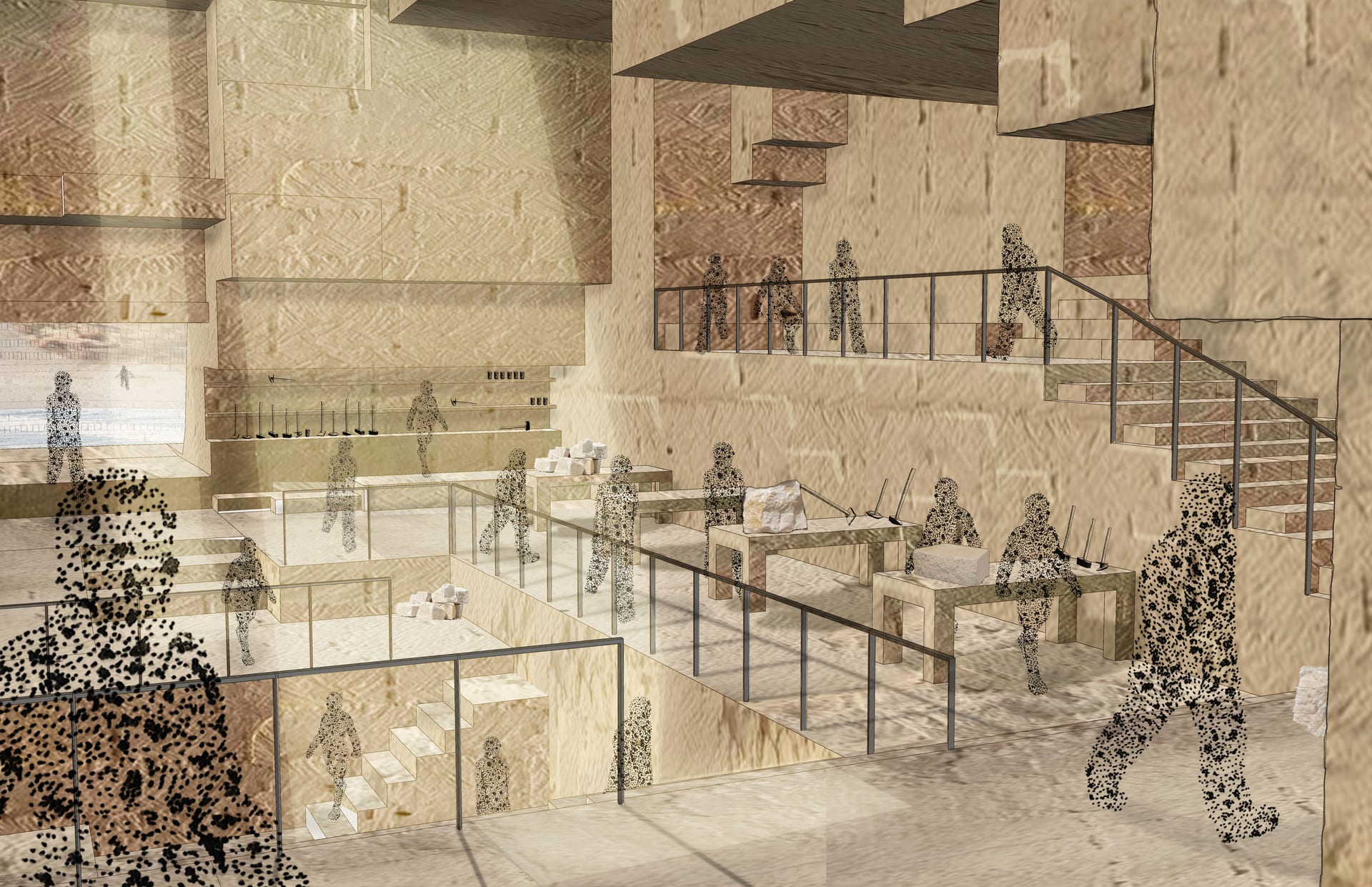


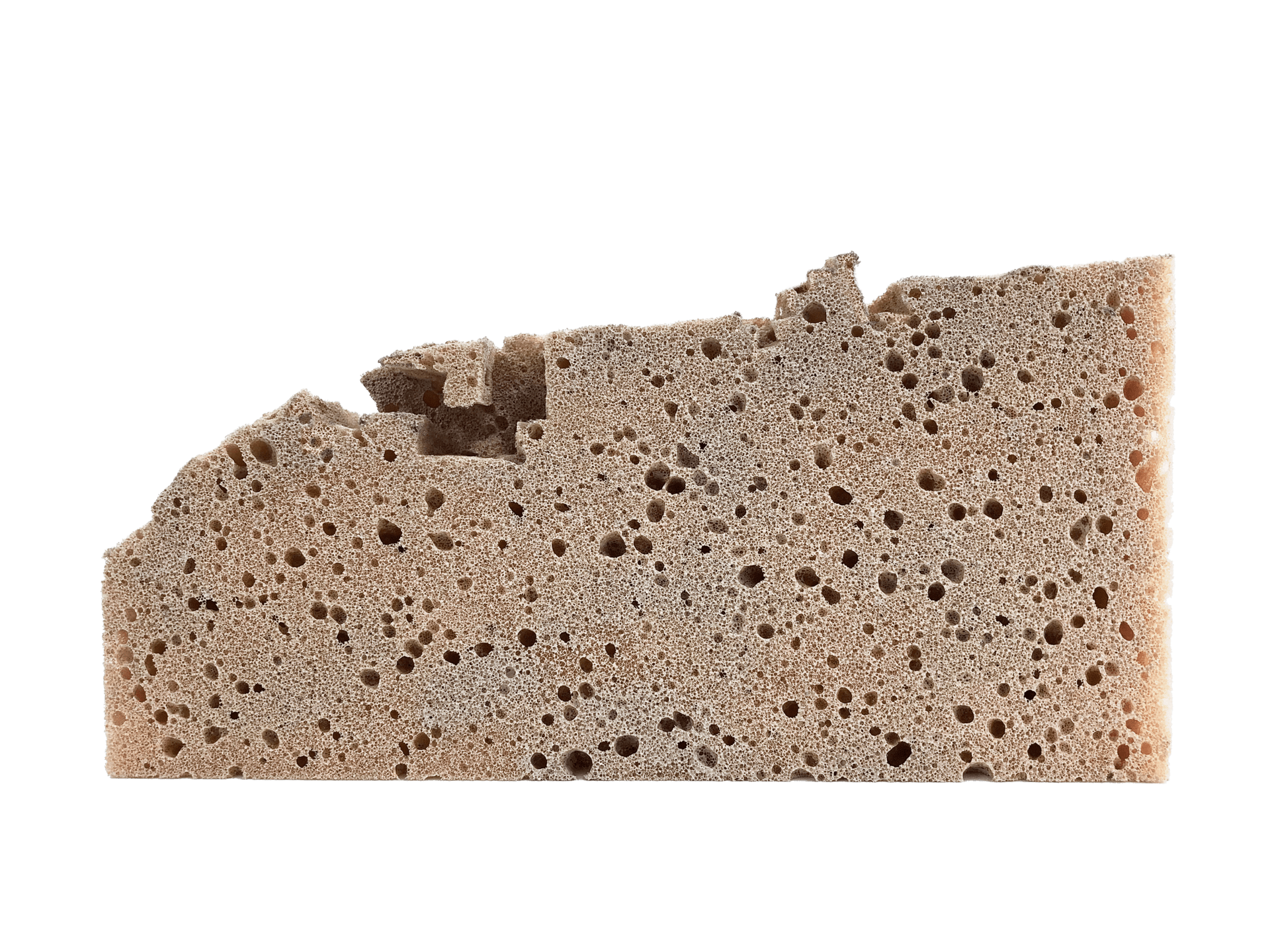
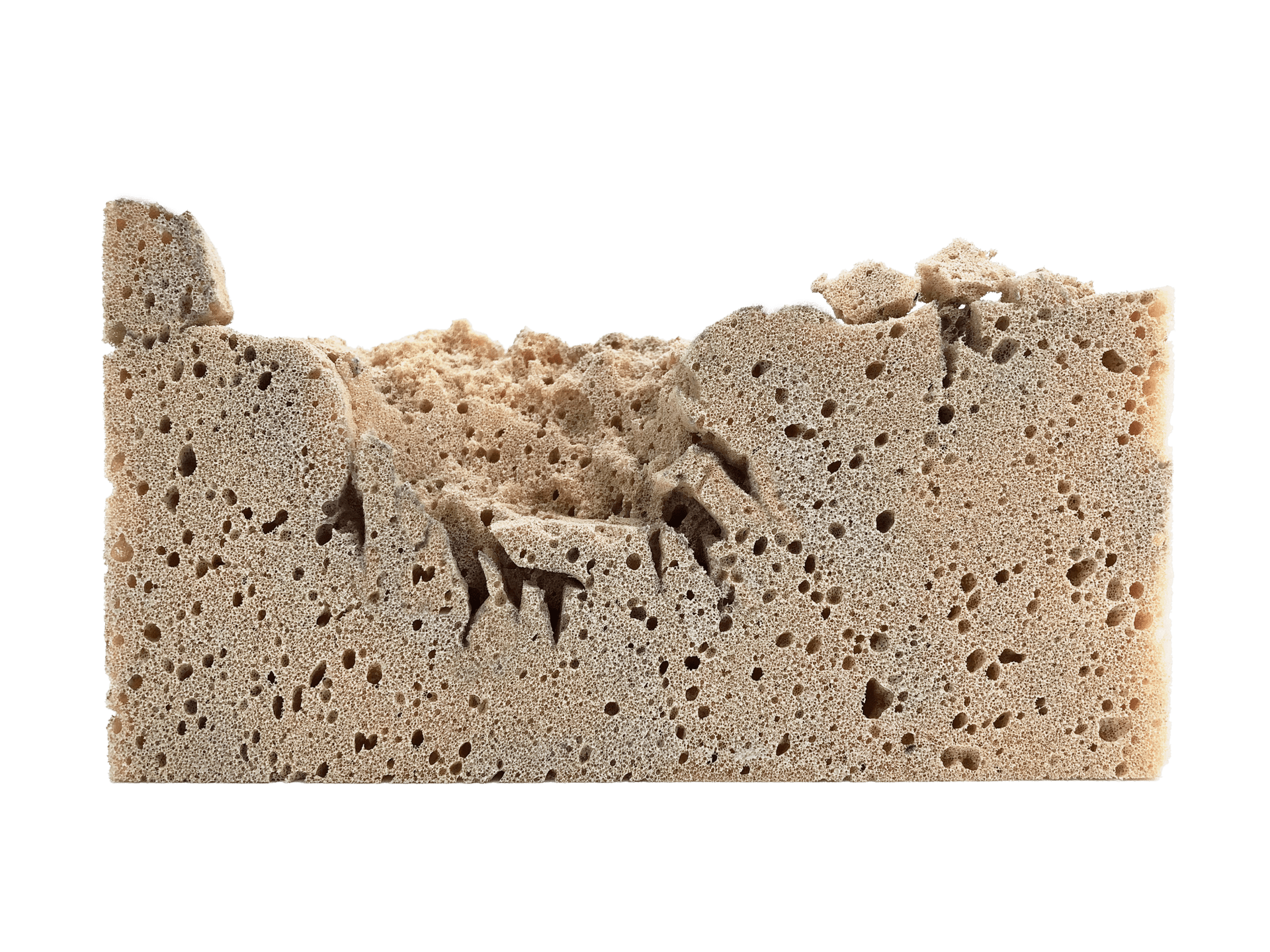
As porosity plays a key role in unlocking the fertile clay soils from within limestone in Lebanon, the role of porosification extends beyond the microscopic scale in the proposed intervention. Counter-intuitively, the quarry is proposed to be regenerated by carving into the site even more to create spaces for humans, encouraging a reignition of the human-limestone relationship once more. However, these new crevices will be implemeted using slow, small-scale, and tactile traditional stonemasonry techniques that use knowledge of the substance to create cool and enjoyable environments for humans to dwell within. By enhancing the relationship between human and limestone, creating small spaces to encourage people to visit the site, the quarry can bring in more potential humans to porosify and regenerate its surface while becoming a site that spreads awareness of the over-extraction and mis-use of limestone in a post-industrial climate.